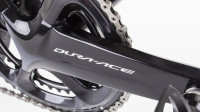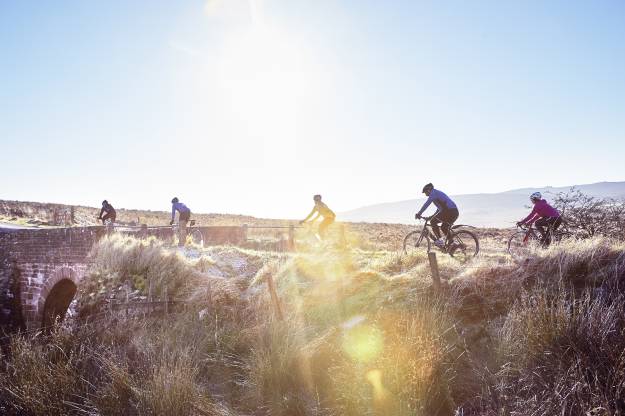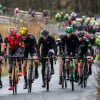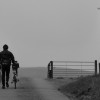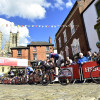Knowledge Level: Intermediate
Racing on the road can be very different from training rides or racing on closed circuits. What should you expect from racing on the road, what are the common mistakes and how do you avoid making them?
You may have been training and focussing on this race for a while; you may have just progressed from youth races to your first junior race; you may be experienced in riding in a group on club rides. However, taking part in your first race on the open road in a bunch is an exciting new challenge and you don’t want to make any mistakes. Understanding the techniques, skills, etiquette and rules will help keep the race safe and enjoyable for everyone. This knowledge can also significantly improve your chances of finishing in the best possible place in the results!
After signing-on, pinning your race numbers on, checking your equipment, listening to the commissaire briefing, you and the rest of the bunch will be ready to roll out in the race convoy.
Road race convoy and marshals
The race will often be neutralised behind a commissaire car as it rolls out. The neutralised roll out transports the race convoy to the race route and creates a safe rolling start to the race. Everyone is nervous, anticipating the race start. Focus on riding safely and holding your position. The race is started when the lead commissaire car pulls in the neutralised flag and accelerates away.
Listen to the horns of the race cars and motorbikes – The race cars and motorbike will sound their horns to tell you to move back into the left-hand lane. They do this so they can come past the group to reposition themselves at the head of the convoy. They may also sometimes use it to warn riders of oncoming traffic. If you hear the horn, move to the left-hand side.
The various vehicles in a race convoy perform a range of tasks from transporting race officials to providing a safe ‘bubble’ for the riders. These include lead cars, motorcycle marshals and cars for commissaires. There are also other static marshals, including accredited marshals, who make road races safer for everyone involved - riders, the race convoy and other road users.
Racing on the open road and in a bunch
You are racing on the open road and need to be aware of other road users at all times, particularly of oncoming traffic. Dangerous riding can result in disqualification or the race being stopped.
Do not cross solid white lines – If there is a solid white line in between the two lanes you must not move into the right-hand lane – this is not only illegal and very dangerous, but you are also likely to be disqualified from the race. Never be on the wrong side of the road when there is oncoming traffic or on blind corners where you cannot see.
How to corner in a line of riders
How to cope with contact in the bunch
Be aware of riders around and behind you – Check behind you before moving off your racing line. Avoid erratic movements that may cause other riders to brake suddenly or take evasive action. Keep your head up and be aware of the riders around you.
Dropped riders – If you are dropped and are no longer part of the race convoy, you are no longer in the race bubble, you are riding on your own in live traffic. You will also no longer be protected by race vehicles or marshals, so must observe junction priorities and follow the Highway Code. Ride carefully and responsibly as you make your way back to the race HQ.
Listening and communicating
Listen to the rider briefing – The commissaires will have driven around the course and made notes on all the areas they think may pose a danger. They will let you know about these in the briefing as well as other racing and event-specific information. The chief commissaire is in charge of the race and will outline the way the race will be controlled and what is expected of you as a rider. You may not be allowed to race if you have not attended the rider briefing.
Communicate with other riders – You will need to communicate things to other riders verbally or with hand signals. By pointing out potholes, parked cars, and indicating when the race is making a turn you are keeping the riders behind you safe and aware of what is coming up ahead.
How to communicate in the bunch
Road race flags, what do they mean?
Flags are used to communicate to the riders in a road race, these are illustrated below.
What do the road race flags mean?
Other links
Intro to Race Smart - Generic advice for new riders regarding safety
How to bike check - There's nothing worse than having great legs only to be let down by a mechanical
Race Smart homepage – Further skills and techniques



